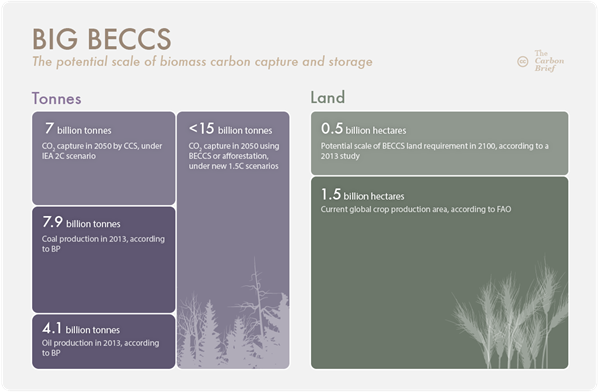
Limiting global warming to 1.5C is still possible, say scientists
Simon Evans
05.21.15Simon Evans
21.05.2015 | 2:30pmIt’s still technically possible to limit global warming to below 1.5C this century, according to new research published in Nature Climate Change.
Only a small window of opportunity remains open, the study says – and it is closing rapidly. Global carbon pricing or its equivalent should have been implemented already and must certainly be in place by 2020. The world would then need to become carbon neutral by mid-century.
The new study pitches into a live and vociferous debate over whether the world should be aiming to limit warming to 1.5C or 2C, and whether either target remains achievable. Carbon Brief puts the new study’s findings in context.
Limiting warming to 1.5C
So far, the globally agreed target for avoiding dangerous climate change is to limit warming to no more than 2C above pre-industrial levels. But more than half of the world’s nations represented under the UN’s Framework Convention on Climate Change (UNFCCC) are in favour of a tougher 1.5C target. These include the least developed and most vulnerable countries, such as the small island states that are already losing farmland to rising sea levels.
A UNFCCC review process is underway to try to decide if a 1.5C goal would be more appropriate. Its initial findings include that the impacts of even 1.5C of warming would be “significant” and that a 1.5C limit would be “preferable” to 2C. However, it warns that the science on the impacts of 1.5C compared to 2C is “less robust” and that until new results become available, any decision on strengthening the current 2C goal may need to wait.
Today’s new research aims directly into this relative scientific void. It says: “So far, only a few studies have reported scenarios consistent with a 1.5C limitâ?¦ Here we fill this gap”.
To find out if 1.5C remains possible it uses two ” integrated assessment models” that represent the world’s energy system and economy under different assumptions about the future of global policy, development and growth.
The models are called ” MESSAGE” and ” REMIND“, chosen because they include a wide variety of emissions reduction options, are “highly responsive” to climate policy and are, therefore, suited to “very deep decarbonisation pathways, which other models may not find feasible”, the paper explains.
Joeri Rogelj, a research scholar at the Energy Program of the International Institute for Applied Systems Analysis (IIASA) in Laxenburg, Austria and study lead author, tells Carbon Brief:
“In order to explore the lowest end of emissions scenarios, it makes sense to use models that are responsive to climate policy signals, because they include a very diverse and large mitigation technology portfolio. Both the MESSAGE and REMIND models fall into this category.”
Stretching requirements
Even so, Rogelj and his colleagues weren’t able to come up with any model scenarios where global temperatures remain below 1.5C throughout this century. They could only construct scenarios that overshoot the target and return to below 1.5C by 2100, and even these impose a range of stretching requirements.
The first step is decarbonising the electricity system, the paper says, and turning it carbon negative by 2050. The scenarios include big increases in the use of electric vehicles and a 40-50% share of residual liquid transport fuel use in 2050 being supplied by biofuels. Heavily curtailing future energy demand is also a key feature of 1.5C scenarios, with only a slight increase over today’s demand by 2100, despite rising populations and growing economies.
Global carbon pricing is assumed to have been in place from 2010 onwards in “many of the 1.5C scenarios”, the paper explains. It adds: “Only very few scenarios are available that start ramping up carbon prices from 2020.” The world remains a long way from global carbon pricing and it certainly wasn’t in place in 2010, raising questions over how realistic the paper’s 1.5C scenarios can be.
Rogelj tells Carbon Brief:
“The models underlying our scenarios reflect the global mitigation effort by means of a global carbon price. This doesn’t mean that this is the only way that mitigation can be achieved in the real world. We highlight that delaying action is incredibly detrimental for the possibility of returning warming to below 1.5C by the end of the century. We also find options that only start in 2020, but not later. The Paris agreement and its long-term ambition will thus be critical.”
Another constraint is that the 37 scenarios meeting the 1.5C goal have median global greenhouse gas emissions in 2020 of 41 billion tonnes and a maximum for that year of 56 billion tonnes. In 2012, global emissions were 53.5 billion tonnes.
Becoming carbon negative
All of the 1.5C scenarios require the world to become carbon neutral – sometimes described as net-zero – by between 2045 and 2060, before becoming net carbon-negative in the second half of the century. This is to compensate for the fact that the carbon budget for 1.5C is set to be used up within as little as six years, if emissions continue at current rates. These new 1.5C scenarios require even earlier global carbon neutrality than the 2060-2080 timeline set out in a study published just a few months ago.
Negative emissions from mid-century on help to compensate for the fact that blowing the 1.5C carbon budget is all but unavoidable. Rogelj’s 1.5C scenarios see negative emissions technologies such as biomass with carbon capture and storage (BECCS) and afforestation absorbing and locking away as much as 85% of the carbon dioxide emitted during 2010-2100. This effectively doubles the available carbon budget.
The extent of BECCS and afforestation implied by these scenarios is very large, removing up to 15 billion tonnes of carbon dioxide from the atmosphere each year by 2050 and at least 17 billion tonnes per year by 2100.
Some related figures illustrate the scale of the challenge this would represent (graphic, below). The rate of carbon dioxide removal would exceed the tonnage of today’s coal and oil industries, combined, and potentially require as much land again as one third of the world’s current croplands.
Graphic by Rosamund Pearce. Sources: 1.5C scenarios – Rogelj et al, coal and oil data – BP Statistical Review of World Energy 2014, current crop area – UN Food and Agriculture Organization, 2050 CCS potential – International Energy Agency CCS technology roadmap 2013, potential BECCS land requirement in 2100 – Tavoni and Socolow (2013).
Limits of the possible
The debate over the feasibility of a 1.5C target is hardly new. Back in 2011, Carbon Brief was exploring whether it was scientifically reasonable, while in 2013 RTCC was asking if it remained within reach.
With scientific understatement, the latest research from Rogelj and colleagues says that respecting a 1.5C goal is, in fact, still possible, but that it would be “a very challenging task”. It says energy efficiency and “stringent early [emissions] reductions are key”, while the “window for achieving this goal is small and rapidly closing”.
This line of argument is a familiar one. In a 7 May comment for Nature, Oliver Geden of the German Institute for International and Security Affairs in Berlin wrote:
“The climate policy mantra – that time is running out for 2C but we can still make it if we act now – is a scientific nonsense. Advisers who shy away from saying so squander their scientific reputations and public trust in climate research.”
Geden’s article has sparked a series of responses, including two separate articles from Vox’s David Roberts. Under the headline, “The awful truth about climate change no one wants to admit”, Roberts considers what it means for something to be “possible”. He writes:
“It’s ‘possible’, yes, but at a certain point that term loses much meaning. Something that would require human beings to quickly and fundamentally change their collective behavior may not violate the laws of physics, but it is unlikely, given what we know about human beings, path dependence, and political dysfunction.”
In other words, there is a difference between the world as imagined in integrated assessment models and the real world containing fallible human beings, complex political trade-offs and power games along with a strong tendency to look for the answers that we want to hear.
This starts to get to the nub of the question raised by Geden’s comment piece: When a study like that released today says 1.5C remains possible, who should be responsible for highlighting the many caveats it contains? Is it “spreading false optimism” even to develop such scenarios, as Geden’s comment suggests?
Rogelj tells Carbon Brief:
“Mapping the full range of possible futures and outlining the requirements of how to get there is our task as scientists. Making the subjective value judgment and choice of where society will go in the end is a task for policymakers. Clearly laying out the facts of what the requirements are to [reach] 1.5C has nothing to do with spreading false optimism.”
Geden tells Carbon Brief the Rogelj 1.5C scenarios require “very heroic assumptions”. He says they may prove impossible to fulfil unless the international policy trend is turned around “very soon”, in order to immediately start to steeply reduce emissions and follow that up with large amounts of negative emissions. Similar arguments apply to 2C pathways.
So what next for international climate politics? The Rogelj paper concludes that a failure to limit warming to below 1.5C by 2100 would not automatically spell the end for the target, as the world could pull back to that level of warming “at a later point in time”, even though this would carry higher risks and more severe impacts.
Geden says:
“On the one hand, this might be a good thing, since 1.5/2C represent levels of environmental quality which we consider to be ‘right’, even if they are not realistic to achieve in the next 100 years, but policy-wise overshoot also allows emitters to be more relaxed, since they could hope to prolong the overshoot period again and again.”
Given current expectations around the UN climate talks in Paris this December, it’s likely that similarly pragmatic approaches to climate target timeframes will gain momentum.
Main image: Inside the cooling tower in power station.
Rogelj, J. et al, (2015) Energy system transformations for limiting end-of-century warming to below 1.5 °C, Nature Climate Change, doi:dx.doi.org/10.1038/NCLIMATE2572
-
It's still technically possible to limit global warming to below 1.5C this century, according to new research


